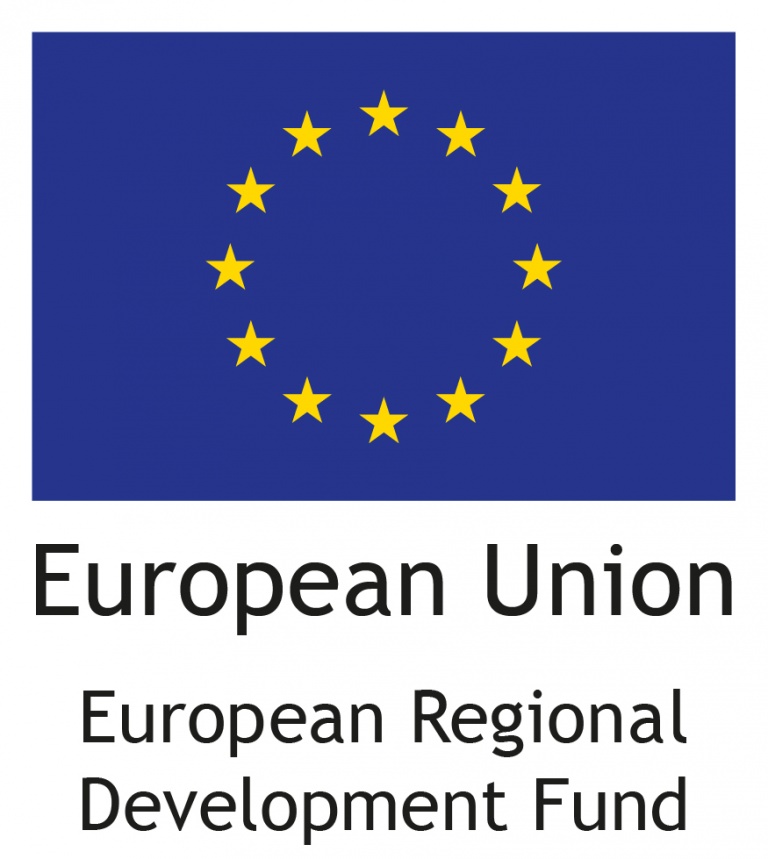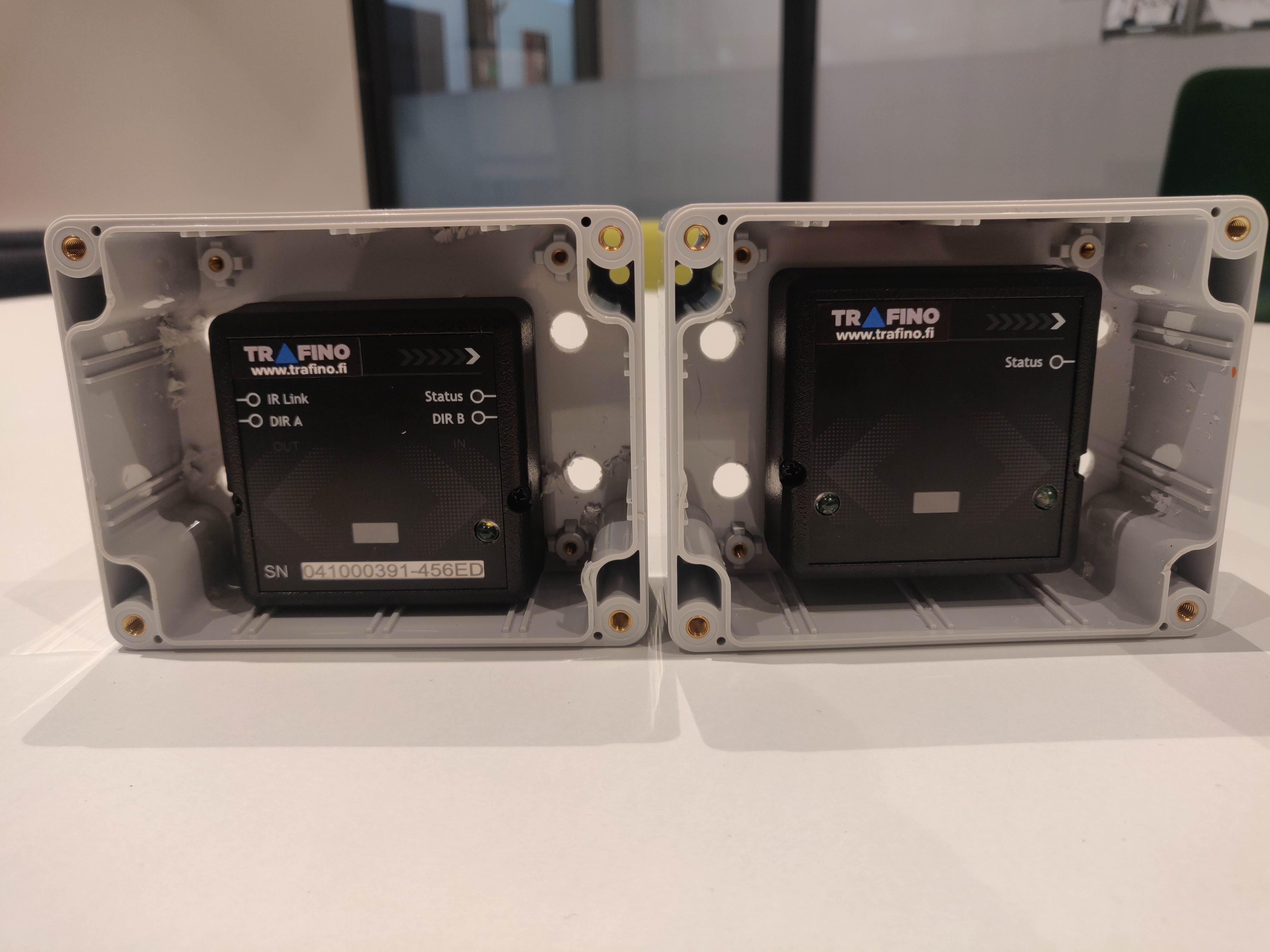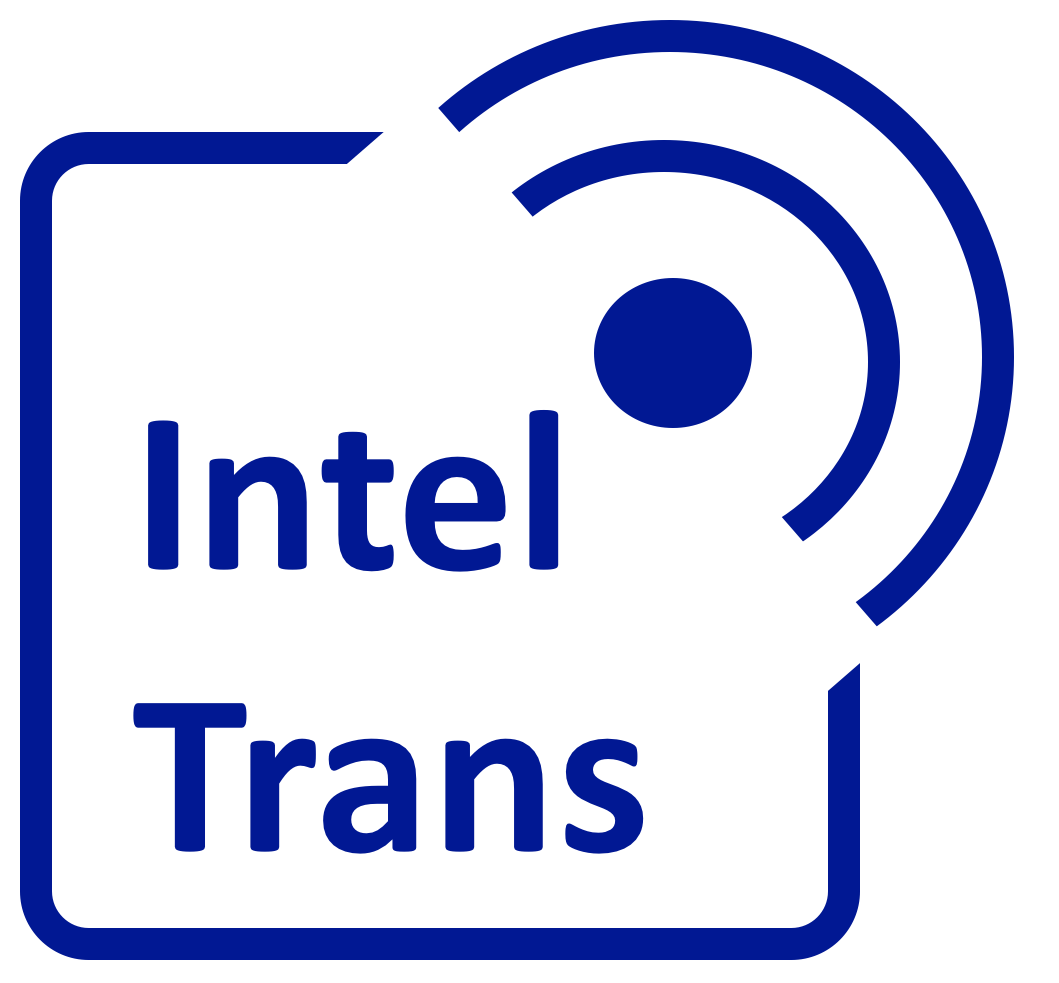Main content blocks
Section outline
-



Intelligent Transport and Traffic Management study module
Traffic measurements 3 ECTS



Learning Outcomes:
During the module, students can familiarize them with the basics of traffic measurements and their technology. The aim is to create a comprehensive picture of different technologies, focusing on the overall picture in terms of technology, making information applicable to different parties internationally. The idea behind this is transport and mobility, supporting the objectives of wise mobility and road safety. In the end of the module students learn general work skills, giving feedback and evaluation each other during their execution.
Student:
-
knows the principles of the traffic measurements;
-
understands the sources of counting (sensors, video analytic, open data)
-
knowing the most common hardware and technology
-
understanding the traffic counting process (planning, installation)
-
knows how to visualize data and which role visualization have
-
understanding the role of data (safety, congestion, authorities, decision making)
-
understanding the overall (integration of data from different sources)
-
give new experiences and improves skills to give feedback.
Lecturer:
Mikael Saarinen (mikael.saarinen@hamk.fi), HAMK
-
Welcome to study!
How traffic can be measured? Who makes those measurements? What kind of devices they use?Digitalization have changed the field of traffic, and with powerful networks and advanced solutions traffic can be measured in totally new ways. In this module you have opportunity to learn about traffic measurements and its data; how we can measure with this days technology and what kind of visualizations are possible. We consider different technologies and think how different authorities benefits the solution. Module gives exampled and different cases where those technologies have been used. At the end of units there are questionnaires and/or assignments.
You can schedule your own studies and it is possible to work and perform assignments 24/7. The whole studies are based in e-learning and BYOD- environment. The idea of the evaluation of the assignments are peer reviewing.
You have 8 learning weeks and you earn 3 credit points from this modules studies.
Here are time Timeline (not necessary to follow and please notice that there is more work during weeks 4-7):
Week 1: Introduction
Study first the materials and external links. At the end you have two questionnaires, answer those after you read materialsWeek 2: Sensor Technology
First you have three sets of materials and some external links. Study those first. After that do assessment based on the topic and do also peer-review.Week 3: Machine Vision
Study first the materials and external links. At the end you have questionnaire, answer that after you read materialsWeek 4: Drones and Video Analytic
First you have two sets of materials. Study those first. After that do assessment based on the topic and do also peer-review.Week 5: Route Condition
Study first the materials. At the end you have two questionnaires, answer those after you read materialsWeek 6: Open data
Study first the materials. After that do assessment based on the topic and do also peer-review.Week 7: Open data
Study first the materials. After that do comprehensive study based on the topic and do also peer-review. This task will take more time than previous assessments!Week 8: Summary and self-assessment
Collect a summary based on what you have learned during the studies an do self-assessment
Materials produced by student are saved in Moodle for a year and removed after that.
Note! Some slides may contain video materials from YouTube, which have not subtitles included.
Some tips for your studies:
- Focus and take time to your studies
- Work and read the materials carefully
- Ask, if you don´t know or understand something
- In the end do self assessment and give feedback
The module is assessed as passed /failed (vai approved / rejected).
You can follow your performance via Moodle´s Monitoring process -tool and mark the assignments done by yourself.
From every topic, first there are materials from H5P slideshows. Study those first. Next there might be some external materials from different sources.
At the end of the topic you have questionnaires from the slides, and/or test and assignment.
-
-
First topic for the module is introduction. You orientate to basics of the traffic measurements.
You have interactive material where you focus the topic, and a little questionnaire at the end. Go and check also those external sources, where you can get useful information about the topic.
Here is some main questions about the module:
- Where data is collected and how?
- Why measurements are made and what benefits it gives in the big picture (decision making, safety, congestion)?
- Guidance on what traffic measurements are and how to measure with different tools.
-
Read about location data and its effects to traffic measurements
-
Destia´s point of view to traffic surveys
-
InfraControl are working in Sweden, read about those measurements
-

In this topic you define basics of sensor technology, its differences and benefits.
You have interactive materials and external sources which gives lot of information. At the end of unit you have an assignment about the topic.
The topic´s main questions are:
- What is measured and how, what requirements from the environment and other factors (authorities, law).
- Basics of planning, installation, and measurement process
Take at least 1-2 days to complete this assignment.
-
Study the guide how you nuilt an effective bike count program
-
SensBit are considering of different kind of technology. Read and study their solution
-
Now it´s time to focus your own living environment and start to think how you can apply your learned information. Make some research in your neighborhood and local city, try to focus on different technologies that you can see and find. Try to answer these questions based on your research:
- What technology are in use?
- Who is the supplier/producer of the technology or device?
- What are properties of the device? Does it count vehicles, pedestrians, cyclists or all of them?
- How about the locations of the devices?
- If you can´t find any devices in your neighborhood, try to focus places where should be sensor. Remember both users of the roads, vehicles and pedestrians.
Pick those points which you find and make a research paper from the results.
Finally, the student should peer review one assignments defined by another student. Use the comment tool. When commenting, pay attention to e.g. the following things:
Is the solution described detailed enough?
What is good and / or needs to be developed?
Write down your own thoughts about the solution
-
This is the introduction for utilizing machine vision in traffic measurements, how technology works

and what benefits it gives. Module contain basics, overview of technology and examples of suppliers. Inside the material are use cases and examples how we can use machine vision in traffic. We also have to familiarize ourselves to AI (artificial intelligence) and machine learning, to understand the overall.
In addition try also focus to external materials, in case you want more information about machine learning and vision usage in traffic.
Take at least 1-2 days to complete this assignment.
-
Traffic lights are one aspect to use machine learning. Read the article how it can be done
-
Read the first impressions of machine vision from 2016, and consider how technology have developed since those days
-

This topic focus about traffic measurements from video and how drones can help with that. Also we operate with different programs in the field of video analytics, how they can be utilized and what options it gives. Basics and overview of suppliers.
At the end are assignment about the topic. You also need to use learned things from machine vision.
Take at least 1-2 days to complete this assignment.
-
List the benefits of machine vision, drones and AI based analytic for traffic and its measurement. Make a comprehensive analyse about the topic.
Consider how machine vision and drones can be utilized in traffic planning and its impact on future traffic infrastructure.
How cities and municipal sector get benefits of those technologies?
How infrastructure can be developed briefly by using those methods?
Every student must consider deeply in one topic/point of view, creating the new conversation based which student have chosen.
Finally, the student should peer review one assignment defined by another student. Use the comment tool. When commenting, pay attention to e.g. the following things:
Is the solution described detailed enough?
What is good and / or needs to be developed?
Write down your own thoughts about the solution
-
In this topic you have a chance to learn about measurements with sensors from cycling paths. How you install sensors, collect and use data from measurement.

One of the topics are machine vision and how video-extracted data can help improve the condition of pathways. What kind of solutions are made and how these can help in development of infrastructure.
Both of the topics have use cases for example what solutions we are able to use. At the end of the unit there´s a questionnaire where you must show what you have learned
Take at least 1-2 days to complete this assignment.
-
In this section you have a chance to explore open data.
What opportunities open data gives to enhance the collected measurement results and how it can be utilized as part of traffic measurements. Topic also shows you what kind of data is available (e.g. national traffic survey, Traficom, Strava, cities)

After you have studied the material, you have an assignment to work with.
Take at least 1-2 days to complete this assignment.
-
Examine how open data can be obtained and collected. Collect data sources based on different areas of mobility (volumes of movement, mode of access sections)
Try to find different sources than others students. Every student must find 3 sources and make a list of the sources they find by creating a new conversation, where source have listed and described. Tell also what effects your source have to traffic and transport.
Finally, the student should peer review two sources defined by another student. Use the comment tool. When commenting, pay attention to e.g. the following things:
Is the sources described detailed enough?
What is good and / or needs to be developed in the description?
Write down your own thoughts about the sources
-
In this module you orientate about data combination from different sources, integration from measurements and open data. You will be showed example of PowerBI, how data mapping works in practice and what kind of conclusion can be made.
Here are some questions for you about this module:

What kind of visualizations are possible?
What is the importance of data visualization?
What impacts data integration have on the decision-making?
Take at least 3-4 days to complete this assignment.
-
Module is almost done, you have only on topic left.
Last topic of the module is summary and self assessment.

What you have learned during the course? How about the skills which you have learned, will they be utilizing in working life? Make a summary about what learned, with the way you find out to be best!
Reserve at least 1-2 days to do self assessment and feedback.
-
Now you have studied the whole Practical project activities- course. For a last assignment you must make a summary based on what you learned.
Write a summary, where you list benefits and most important things from the materials. Think that with these assignment, you make a list for yourself for the future. Use word or some other solution (mind-map tools etc.)
Minimum size of this assignment is 1-2 pages.

-